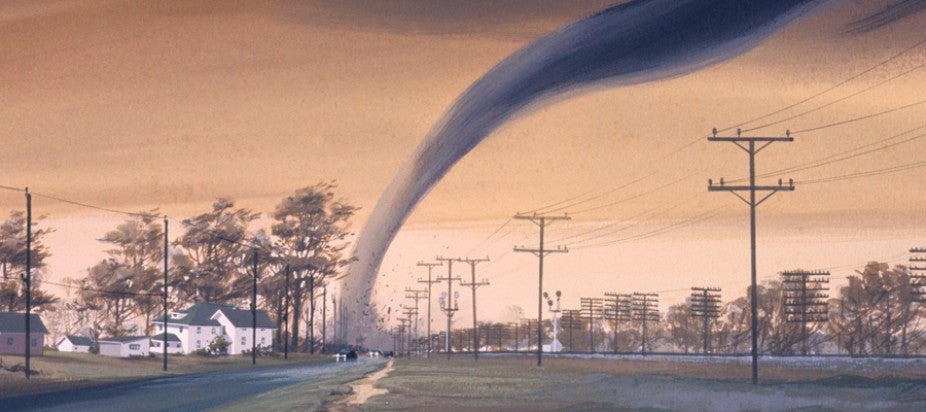Weather Ready Nation: A Vital Conversation

Meeting
Dec. 13 to Dec. 15, 2011
5:00 – 5:00 pm MST
Norman, OK
Main content
Weather Ready Nation:
Reducing Impacts from Nature's Most Violent Storms
Tornado and Severe Weather Workshop and Symposium
Goal
Initiate a national conversation among the user, service and science (physical and social) communities, including key stakeholders and America's weather enterprise, to identify, prioritize, and set in motion actions to improve the nation's resiliency against severe weather, especially tornadoes, to protect lives and property.
Governing Principles
- The Workshop and Symposium are designed to maximize two-way learning and knowledge sharing across the Weather Enterprise and stakeholder community -- including the emergency management community, educators, health and safety experts, engineers and social scientists, planners and responders, government agencies and officials at the Federal, state, and local level -- to capture their input from front-line experience using NWS severe weather warnings and services to ultimately improve the warning process
- The end-to-end warning process begins with NWS products supported by strong science and decision tools, but is only successful if the entire Weather Enterprise and stakeholder community work together. While the time period of discussion is not bounded, the majority of the focus will be on improving services, science and delivery to reduce severe storm fatalities in the near-term
- Provide best steps forward framed in a realistic fashion within context of the current budget environment
Scope
- Improve User-Driven Impact-Based Forecasts/Warnings
- Sharpen Science-Service Linkage
- Improve Service Delivery
- Leverage Community Planning and Impacts Mitigation
Overview
- Improve User-Driven Impact-Based Forecasts/Warnings
- Engage national, state, and local governments and stakeholders (Senators, Governors, Council of Mayors, county leadership, business leaders etc.) to seek representation from areas recently impacted by significant events to draw on their collective experiences
- Capture and integrate best practices from warning and risk communication
- Incorporate science-based, culturally-relevant understanding of the entire end-to-end process from early detection to early warnings and forecasting that communicates societal impacts; ultimately ending in more informed planning and decision-making and increased resiliency
- Seek guidance from user community on improvements to the NWS portion of the watch/warning process (e.g., improve accuracy, extend lead times for outlooks, watches and warnings; improve probability of detection, reduce false alarm rates, improve geographic specificity, improve warning packaging (e.g., graphical), and continue research toward "warn on forecast" capability)
- Strengthen consistent communication, understanding and messaging across communities: Social Scientists, Media, EM Community
- Sharpen Science-Service Linkage
- Identify key research and technological opportunities to improve observations, predictive modeling, forecasts and warnings, planning and decision tools that promote "risk-wise" behavior
- Improve product dissemination and communication, and user/public response
- Integrate relevant societal impacts into short term event response and decision making as well as long term planning
- Ensure mature research results are evaluated and where relevant are transitioned to operations
- Identify key research topics/advancements for 1) improving NWS foundational services, 2) understanding of storms that produce severe weather, and differentiate those storms that produce tornadoes from those that do not, 3) assess the current state of post-storm damage assessment
- Provide background material on what we know (and don't know) regarding the trend in severe weather occurrences and possible linkage to climate variability and change
- Improve Service Delivery
- Improve dissemination and communication across all domains from local to regional to national; designed with user-driven requirements for maximum impact (including social media and technological advancements from America's weather enterprise)
- Improve communication processes with respect to vulnerable populations (i.e., targeted education, communications and decision-support)
- Respond to service assessment recommendations by identifying actions/projects within NOAA and through partnerships
- Improve collaboration among the public and private sectors
- Leverage Community Planning and Impacts Mitigation
- Integrate impact information into warning messaging (including health and safety impacts)
- Integrate structural planning and mitigation (including urban development, home & building safety, etc): NIST, FEMA and US Army Corps
Expected Outcomes of the Symposium and Workshop Include:
- Identifying, prioritizing, and setting in motion actions to improve the nation's resiliency against tornadoes and other severe weather
- Identifying advancements in longer term outlooks and forecasts and their links to preparedness
- Identifying advancements in short-term forecasts, watches and warnings and their links to responses
- Outlining and initiating end-to-end pilot projects within communities that involve NOAA, other government agencies, media, emergency management, social scientists, community leaders, the Weather Enterprise and other stakeholders to improve the nation's resiliency to tornadoes and other severe weather. Ensuring these activities are mapped into the existing approved NWS pilot projects.
- Identifying scientific and technological opportunities and promoting innovation to advance the end-to-end process from observations and severe storm detection, to storm scale predictive modeling, to collaborative interactions with users in preparedness, the provisions of warnings and forecasts, and response and recovery.